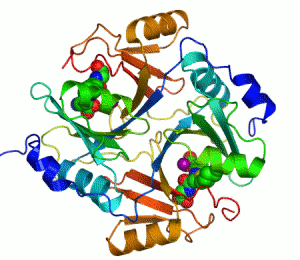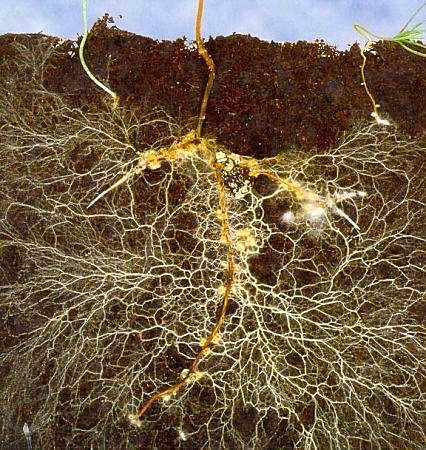My sister encouraged me to check out a Portland group of people who get together for several days, weeks or months every year to build community in their neighborhood. They have made
at least 32 community-building
gathering sites around Portland. Their activities range from painting streets and intersections to starting community gardens to building kiosks, covered benches and playgrounds out of natural building materials like cob, earthen plaster and straw bales. I will post pictures of this year's progress when I see it as I'm volunteering to help this year; this g
oogle image search shows some of what they have done.
Building community is important to biology because we, as a part of biology, thrive on shared physical resources and, like plants, we grow faster the more interconnected we become. Plants and fungus trade nutritional ions and soluble organics between each other (nitrates, amino acids, and many more) like we trade cash for groceries at the store only they do it in a much more sustainable way. Instead of needing to travel miles to the grocery store to get what they need, plants get it from proximate sources within a web of vastly distributed and entangled biomass; there can be
miles of mycelial (fungal) networks underground. In fact, the largest organism is said to be the fungus
Armillaria solidipes (formerly
Armillaria ostoyes), also termed the "Humungous Fungus"; it is 3.4 square miles of fungal networks
and astonishingly comes from Oregon's very own Malheur National Forest. A locally-derived sustainable web of resources for thriving life is a reality for biology and it's the backbone philosophy the VBC puts forth as it expands evermore into humanity's cultural realm; it is part biomimicry and part ingrained genius.
There are so many reasons why it's beneficial for us to build community, the connection and sharing of resources saves energy. In biology, plants are supported via their root systems to the soil and connect with each other to extract nutrients from the surrounding materials in the soil. The more symbiotic fungal networks they can tap into, the less roots they need to grow in order to get the nutrients they need, and the more sunshine and CO2 they can convert into sweet sugar. No wonder that millions, and maybe even thousands of years ago, biology was existing on a huge scale. Soil contains a lot of goodies for plants; it is derived from decomposed proteins, fats, sugars, clays, silts, sands, ancient marine life, and even dissolved air; things from the air include dissolved carbon dioxide as carbonic acid, nitrogen, and oxygen. Clays are a variety of nano-sized tectosilicate particles from 1 nanometer (nm) to 1 micron (1000 nm), approximately the size of proteins, that are suspendable in water.
 |
| Clays - SEM Micrograph Wikimedia Commons |
Silts are micro-sized aggregates 1 micron to hundreds of microns of tectosilicates. Tectosilicates are minerals which include crystalline Silicon dioxide (quartz),
feldspar,
zeolites, and
other awesome naturally occuring compounds and elements. Sands are macro-sized aggregates that I hope you are familiar with already. Other things in silt and clay include water, potassium, sodium, calcium, aluminates, magnesiates, and even more! Nature is ridiculously complex. When dissolved with water these aggregates become like porous hydrated spheres floating in an ocean of soil, like in the movie SPHERE,
exchanging charged ions and adsorbed organic compounds kind of like a space shuttle. Biology as a whole uses these materials for it's minature biochemical factories, also called enzymes.
 |
| Zinc-containing enzyme Human glyoxalase I (Wikimedia Commons) |
Besides the awesomeness of using miniature factories, the mycorrhizae, or root fungus, acts to extend the absorption capacity of plants by over 1000 fold.
 |
| Alberton, O., Kuyper,T (2009) |
This picture reminds me of the human brain and the internet. So get out there and visit vbc.cityrepair.org if you're in Portland, or better yet start your own neighborhood takover and get your neighbors involved in building community so that we all don't have to work as hard to get what we want. For more fun related to biomimicry check out
this video and then get involved in the movement! As a whole we can create beautiful intersections between roads, people, and plants using biology as our guide. Now you can consider yourself a newly appointed villager in your local city village and be merry!











.jpg)






